By Raghu Hebbale
Kaveri Nisargadhama, a beautiful 64-acre island near Kushalnagar on the Mysuru-Madikeri Highway, has been renovated and beautified by the Forest Department. The nature park, surrounded by River Cauvery, is an ideal weekend getaway for those who yearn to be amidst nature, far from the madding crowd. This Weekend Star Supplement presents an overview of Nisargadhama, its environs and lists out activities that await a visitor.
Kaveri Nisargadhama beckons weekend visitors
For those who wish to escape from the mundane and hustle and bustle of city life, Kaveri Nisargadhama (also called Cauvery Nisargadhama) is an ideal destination. Apart from being in the must-visit list of almost all tourists heading to Kodagu, the journey to Nisargadhama is pretty enjoyable as one encounters lush greenery and agricultural farms. And mind you, you can have the best time and that too with a light wallet.
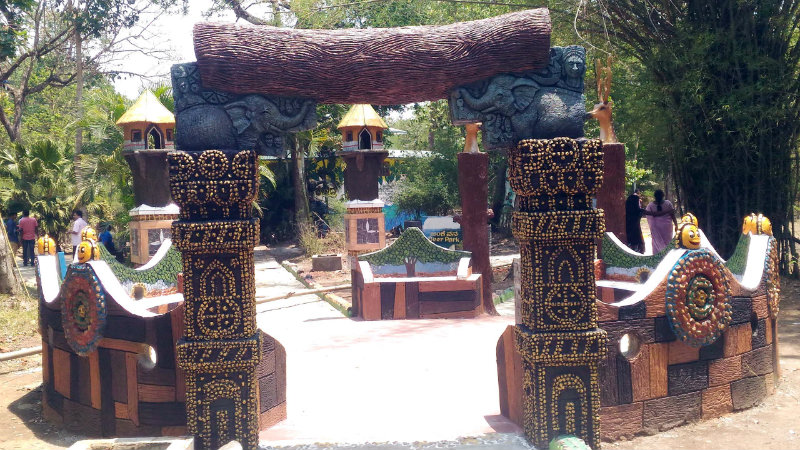
The open spaces and entrances that have been beautified artistically are bound to attract visitors.
With temperatures soaring and humidity increasing, now is the best time to visit Kaveri Nisargadhama to experience a cool and uncorrupted environs. Moreover, the forest department has given the tourist destination a complete makeover and added a couple of attractions. It has refurbished the main entrance and has given an opportunity for tourists to learn about local culture. The Nisargadhama now has a modern touch with good tourist facilities and refurbished cottages.
Nisargadhama is a breath-taking and beautiful island off the State highway, two kilometres from Kushalnagar town. It is 28 km from Madikeri and 95 km from Mysuru. The 64-acre island, surrounded by the Cauvery River, can be accessed by walking across a hanging bridge.
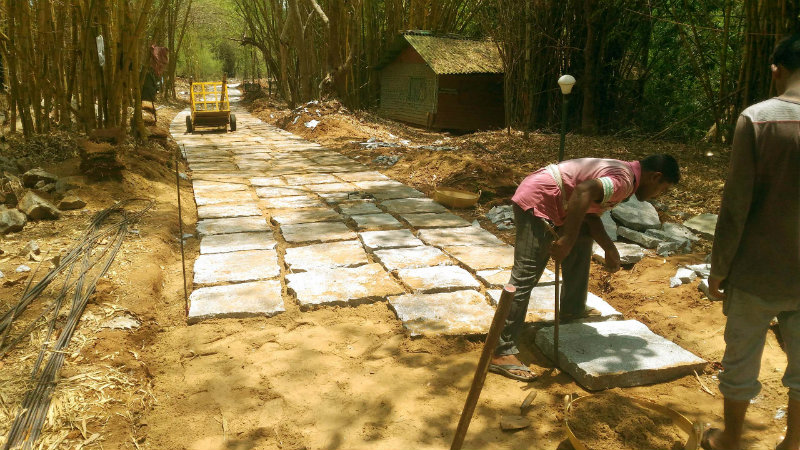
Workers lay stone slabs on a tourist walkway.
ATTRACTIONS
Established in 1989, the picturesque picnic spot with lush foliage of thick bamboo growth, sandalwood and teak trees has lovely river-side cottages. A deluxe cottage on stilts with the Cauvery flowing around can accommodate five persons.
There is a deer park, children’s park and orchidarium in the resort. Medicinal plants are also grown here and tourists are allowed to get into water at a few shallow and safe points along the river. However, swimming is banned during rains as the water will be in full force. There are deer, rabbits, peacocks, and a children’s playground. Elephant rides and boating are some of the other attractions. It also has a forest department-run guest house and treetop bamboo cottages.
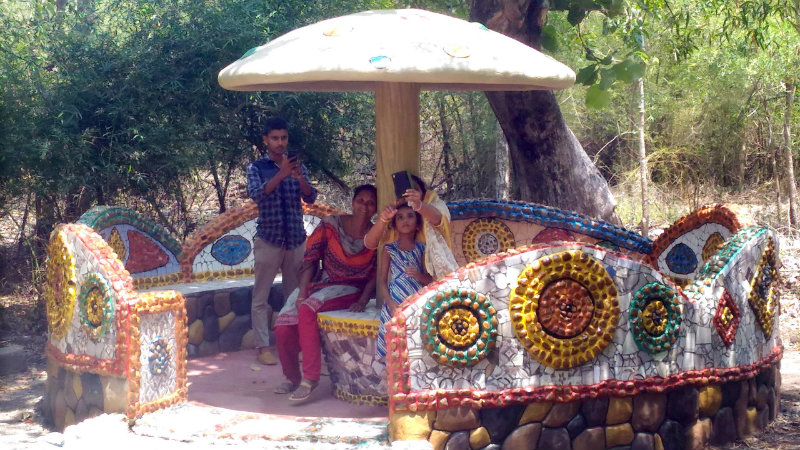
After a long walk amidst bamboo grove, time for some selfies.
The tourist spot has numerous teak wood and sandalwood trees, small waterfalls, green mounds that have steps for a visitor to climb and sit on stone benches.
Nisargadhama is maintained by the Forest Department and the refurbishing works have been taken up after more than two decades at a cost of Rs. 1.22 crore. During renovation, care has been taken to ensure that the place is made further attractive for tourists so that they can spend some quality time.
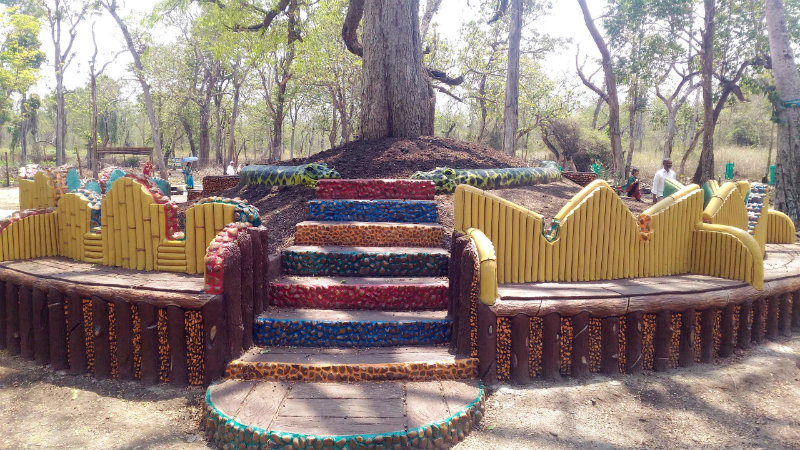
Aesthetic structures at the base of a tree.
NATURAL ISLAND
Nisargadhama has been formed on a natural island where river Cauvery flows. The area is located at Bollur Village under Guddehosur Gram Panchayat. As it is an island, the Forest Department connected it with a 90-metre hanging bridge. It constructed another hanging bridge next to the old one in 1995 and was inaugurated by the then Forest Minister H.Y. Meti.
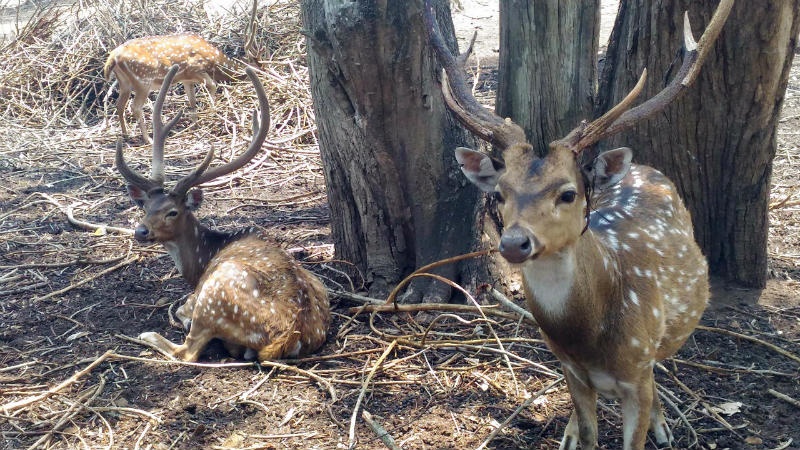
Deer Park at Nisargadhama is a great hit among tourists.
The department officials then constructed cottages, treetop bamboo accommodation, children’s play park and also grew bamboo plantations to give that special feeling of being amidst nature to the tourists. Nisargadhama is actually a bamboo forest surrounded by River Cauvery.
HANGING BRIDGE
The hanging bridge has been renovated, repainted with loose ends fixed to enhance its strength. Bridge Man Girish Bharadwaj, who has built hundreds of low-cost suspension bridges across India in remote and inaccessible areas enabling people to cross over from one side to other, led the renovation of Nisargadhama hanging bridge and the works were entrusted to Manjunath Engineering Works of Sullia. It may be worthy to mention here that Girish Bharadwaj received the Padmashree this year.
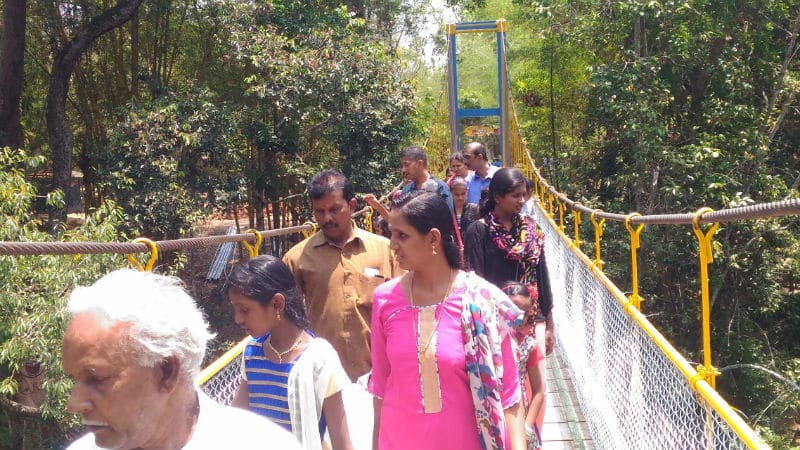
As part of the renovation works, old and outgrown bamboos have been removed to restore the greenery and new bamboo shoots have also been planted. “The idea is to make the Nisargadhama green (true to its name) to attract more and more visitors. The place now receives tourists from far and wide who have made it a point to include this place in their itinerary,” said Kushalnagar Range Forest Officer Nehru.
TRADITIONAL TOUCH
The development and renovation works taken up at Nisargadhama include entrance gate, boundary walls, beautifying of the park with artistic structures that enhances the aesthetic appeal of the gardens and open spaces. As part of its efforts to inform tourists about local culture of Kodagu, Kodava art forms like ‘Ummathat’ and ‘Pareyakali’ have been represented. Life-size statues of traditionally dressed men performing ‘Pareyakali’ and colourfully dressed women performing ‘Ummathat’ have been erected in an open area.
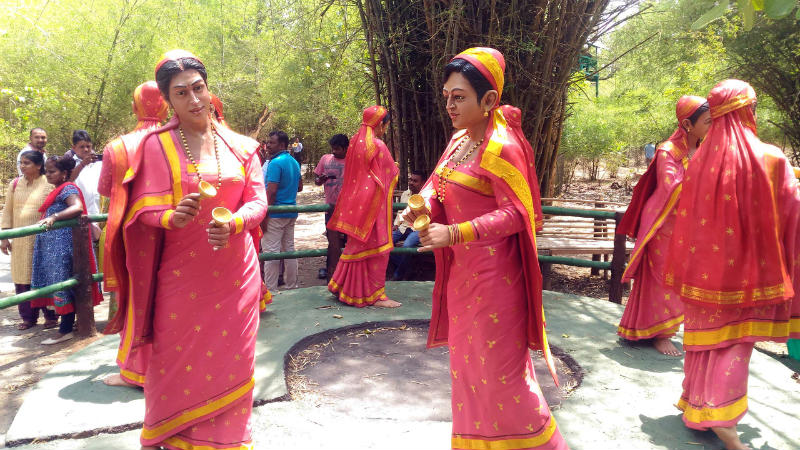
Life-size sculptures of Kodava women performing traditional dance Ummathat.
A special mantap has been erected on the way to Deer Park. Two new bamboo cottages and a dining hall have been constructed and a road with green grass has been laid. To ensure that grass across the park remains green throughout the year, special water pipes have been laid with sprinkler system to spray water.
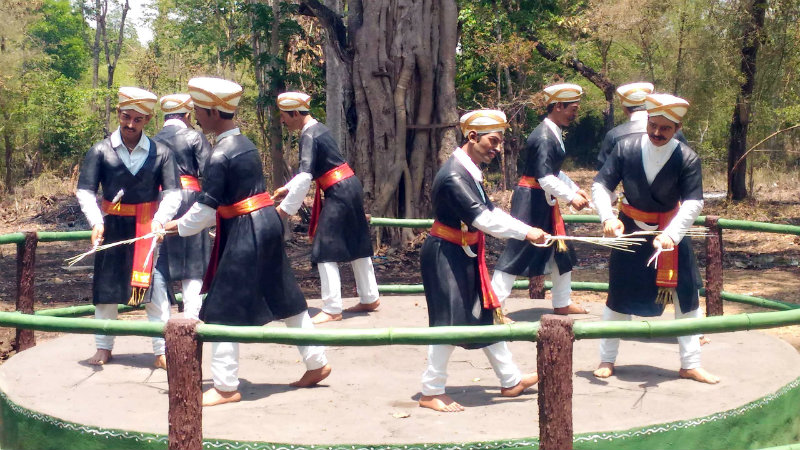
Kodava men performing Pareyakali.
BOAT RIDE/ ELEPHANT SAFARI
As a tourist enters Nisargadhama, the very first eye-catching thing he/ she observes is the boat ride in the river. The boat rides are so popular that one needs to wait for quite some time for his/ her chance to come. And it is worse during weekends where there will be a big queue.
Next are some caged animals like deer and rabbits and tourists are allowed to purchase cucumbers and carrots to feed them. The other popular activity inside the Nisargadhama is elephant ride that takes a tourist around the area for a nominal price. There is also a shallow stream where children can play and elders can relax amidst greenery and amidst the rustling sound that comes out of the bamboo growth.
How to reach Nisargadhama
Nisargadhama, an awe-inspiring and a beautiful island, is 2 km from Kushalnagar situated on the Mysore-Madikeri Highway towards Madikeri. It is 28 km from Madikeri and 95 km from Mysuru.
About the place
This is a bio-sphere reserve nestled in the Western Ghats of Karnataka and is surrounded by River Cauvery. It hosts a diverse variety of trees and shrubs, and animal life.
What you can do at Kaveri Nisargadhama
Elephant safari
Playground for children
Walk on the hanging bridge
Parks to relax
Boating
Unwind inside bamboo cottages
Walk between bamboo trees
Permitted swimming in the Cauvery River (prohibited in rainy season)
Other tourist spots near Nisargadhama
Harangi Dam
At a distance of 34 km from Madikeri and 10 km from Kushalnagar, Harangi Dam is built across Harangi, a small stream and a tributary of River Cauvery at Hadgur village. River Harangi originates in the Pushpagiri Hills of Western Ghats. The dam is 846 meters long with a height of 47 meters and it attracts a large crowd during the monsoon season when the gates are opened and the water is released. It is one of the popular sightseeing places in Kodagu. The backwaters are spread across several acres with small islands in the middle and thick forest on the banks.
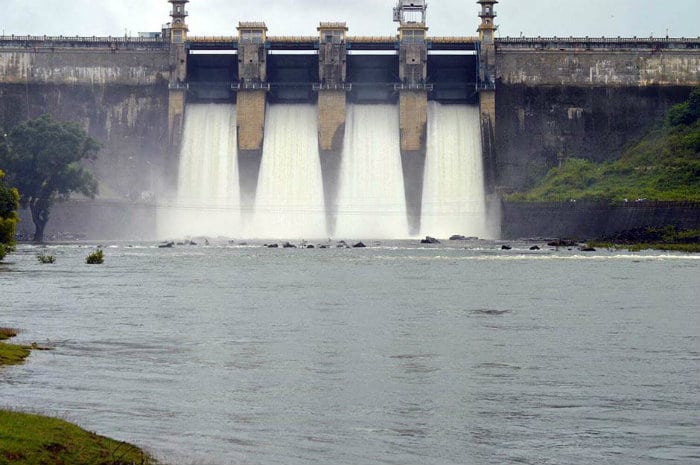
Harangi Dam
Bylakuppe Tibetan Settlement
One of the largest settlements of Tibetans in India located just 3 km from Kushalnagar. This was the first such refugee settlement established way back in 1961. Situated 90 km from Mysuru, Bylakuppe comprises two Tibetan refugee settlements that were setup in 1961 and 1969 respectively and has now grown into a full-fledged town housing the largest Tibetan population outside of Dharamsala in India. The most famous monastery in the region is Namdroling (in pic), located in Camp 4 of the settlement. Being the most popular, it plays host to many tourists from all over the world.
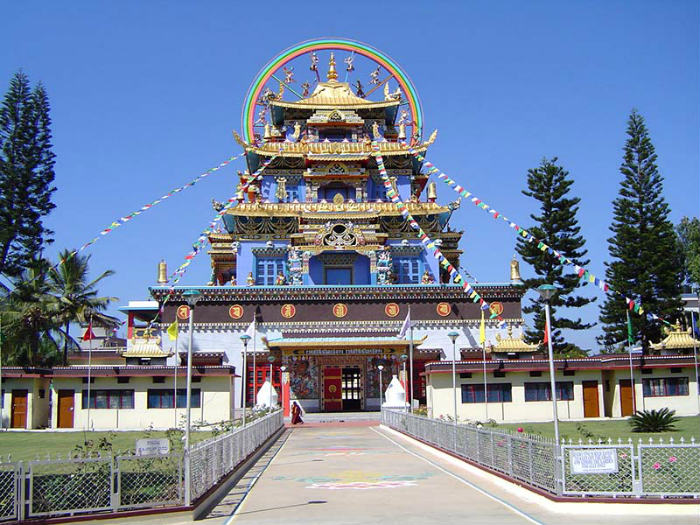
Bylakuppe Tibetan Settlement
After Nisargadhama trip, enter the world of elephants at Dubare
Dubare is a reserve forest and an elephant training camp located about 15 km from Kushalnagar town. Dubare Elephant Camp is a project maintained by Forest Department and Jungle Lodges and Resorts. The camp is situated on the edge of Dubare forest and houses an incredible number of trained and well-behaved elephants.
A trained naturalist is at hand to explain the various aspects of elephant history, ecology and biology. The visitor can not only observe and learn but also participate in various activities involving elephants. Some of the elephants for the famous Mysuru Dasara are trained here.
In Karnataka, the Forest Department has about 200 elephants at various camps and Dubare has been historically an important camp. The department spends a lot of money to capture wild elephants, bring them to camps like Dubare and maintain the mahouts, their assistants (kavadis) and their families.
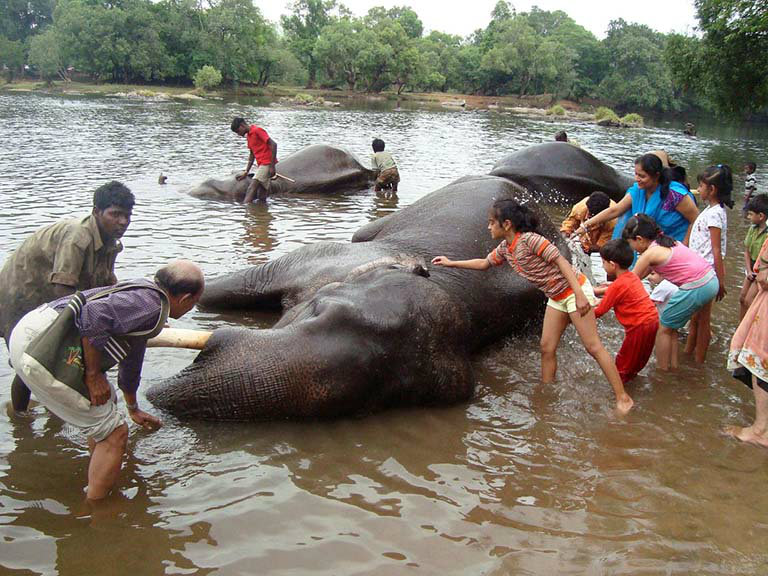
At Dubare, the department aims to provide tourists with ‘an intimate experience with elephants’. It is the best place to get to know these giants. With a host of activities at the camp, tourists can leave with a sense of responsibility to do their bit towards protecting elephants.
Tourists are taken through the complexities of elephant lives. They get to observe elephant routine and at the same time understand their behaviour, their life in the forest and how they are trained to perform various tasks. In a nutshell, a tourist can see how a wild elephant is captured to be trained to capture other wild elephants!
They can watch elephant grooming sessions – when the gentle giants are given a scrub-bath in the river, with rituals like oil being applied to their forehead and tusks. Once they are bathed, tourists can learn how elephant food is prepared and how they are fed. Mahouts will also demonstrate how elephants obey commands. Visitors can learn about the lives of mahouts, kavadis and their families whose lives revolve around elephants.
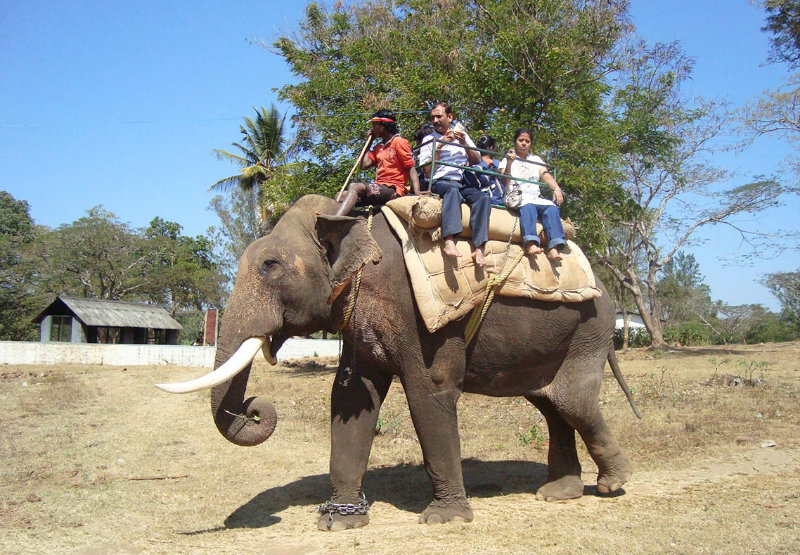
The moist deciduous forests of Dubare are home to many wild animals and birds. Sightings of wild Asiatic elephants are regular and so are spotting the sambhar, the spotted deer, tigers, leopards, wild dogs, and gaur. Bears are also seen in these forests and crocodiles can be seen in the river. The forests are also home to many reptiles and venomous snakes including the legendary King Cobra.



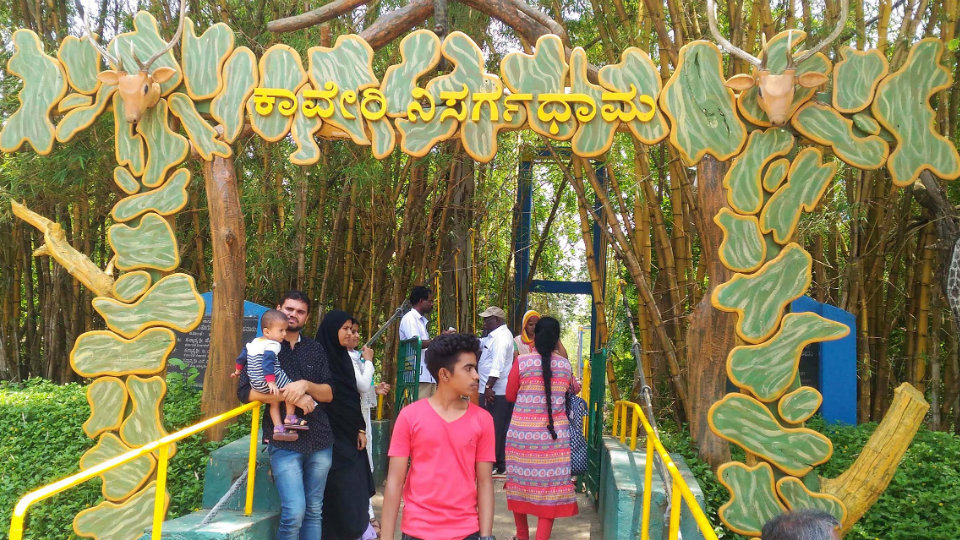

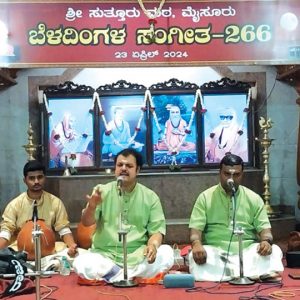


Recent Comments